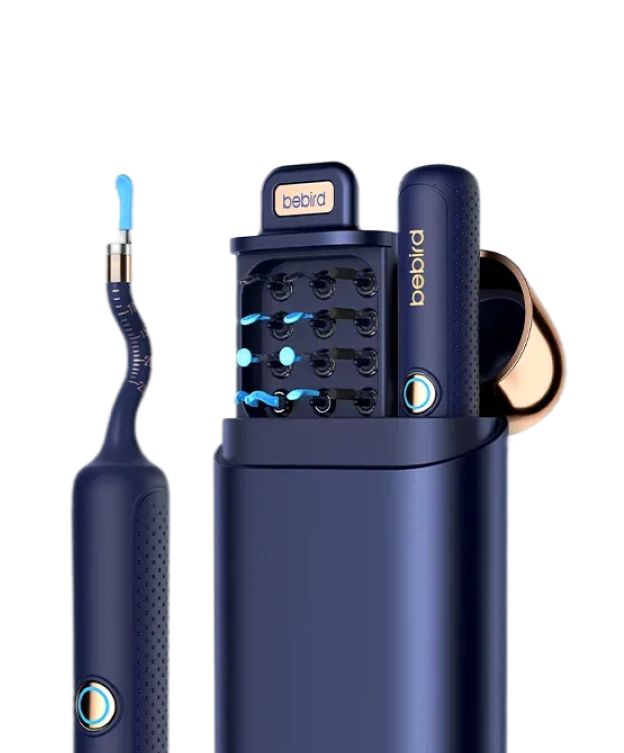When it comes to piercings, choosing the right gauge size matters. The "gauge" refers to the thickness of the jewelry or the size of the piercing hole. The key thing to remember is that gauge sizes follow a reverse scale: smaller numbers mean thinner jewelry, and larger numbers mean thicker jewelry.
Selecting the right gauge is important for both comfort and healing. Whether you're getting your first piercing or stretching an existing one, knowing the correct gauge size will help ensure the best experience.
What is Gauge Sizes Ear?
When we talk about gauge sizes for ears, we’re referring to the size of the hole in your ear and the jewelry that fits into it. The gauge number indicates the thickness of the jewelry, and it’s crucial for both comfort and appearance.
In ear piercings, gauge sizes typically range from very small, like 20G or 18G, to larger sizes, such as 00G or even bigger. Smaller gauge sizes are used for initial piercings, while larger gauges are often chosen for stretching existing piercings to accommodate bigger jewelry like plugs or tunnels.
Why should you care about gauge sizes? Knowing your gauge size is important because it helps ensure the jewelry fits correctly and comfortably. If the jewelry is too small or too large for your piercing, it could cause irritation or even slow down the healing process. The right gauge will also help your piercings look their best, whether you're wearing studs, hoops, or more elaborate pieces.
Gauge Range for Body Jewelry
Body jewelry comes in a variety of gauge sizes, and understanding the range can help you choose the right fit for your piercings. The gauge size not only determines the thickness of the jewelry but also affects how your piercing heals and how comfortable it feels.

For most piercings, the range starts at 20G, which is around 0.8 mm in diameter, and goes up to much larger sizes, like 00G (9.3 mm). Here’s a breakdown of some common gauge sizes:
-
18G to 20G: These are typically used for standard ear piercings. 20G is the most common size for new piercings, while 18G might be used for slightly thicker jewelry or after some healing.
-
14G to 10G: Often used for cartilage or thicker piercings, like the tragus or industrial piercings.
-
6G to 00G: These sizes are for stretching piercings, commonly used for ear stretching and creating larger holes for plugs or tunnels.
Larger gauges (like 2G and beyond) are typically used in the process of stretching a piercing. When stretching, it’s important to go gradually, using a series of progressively larger gauges to avoid damaging the piercing.
The right gauge size depends on the type of piercing, the jewelry you prefer, and your personal comfort. Whether you’re going for a subtle look or more dramatic body jewelry, understanding gauge sizes ensures you pick what works best for you.
Clean Tips
Proper cleaning is essential for maintaining the health of your piercings and jewelry. Whether you’re dealing with a fresh piercing or you’ve had one for a while, cleaning helps prevent infection, irritation, and prolongs the life of your body jewelry.

Here are a few tips to keep your piercings and jewelry in top condition:
-
Clean regularly, but don’t overdo it: For fresh piercings, cleaning should be done at least once a day with saline solution or an antiseptic solution recommended by your piercer. However, avoid excessive cleaning as it can irritate the skin and slow the healing process.
-
Use the right cleaning solution: Mild saline solution or a non-alcoholic antiseptic is ideal for cleaning piercings. Avoid using alcohol or hydrogen peroxide, as these can dry out your skin and delay healing.
-
Avoid touching your piercing: Wash your hands thoroughly before touching your piercing or jewelry. The less you touch it, the lower the risk of transferring bacteria to the area.
-
Clean your jewelry: Over time, body jewelry can collect dirt or oils from your skin. Clean your jewelry regularly with warm water and a gentle soap. For larger pieces, like plugs or tunnels, you can use a soft cloth to wipe away any buildup.
-
Be mindful of healing time: If you’re stretching a piercing, make sure to follow a gradual process and clean the area thoroughly after each stretch. Don’t rush the process, as healing can take time depending on the gauge size and location of the piercing.
Taking care of your piercings and jewelry ensures not only that they heal properly, but also that they continue to look good and remain comfortable. A little extra attention to cleaning goes a long way in preserving both your health and your body jewelry.
Proper ear hygiene also helps prevent issues like the cheese-like smell behind the ears. Regularly removing earwax buildup, as explained in “Ear Wax Smell: Symptoms, Causes, and Treatment,” can reduce odor and discomfort, complementing your piercing care routine.
Conclusion
Choosing the right gauge size for your piercings is essential for both comfort and healing. From smaller earrings to larger plugs, understanding the appropriate gauge ensures your jewelry fits properly and your piercings remain healthy.
Regular cleaning is just as important for keeping your piercings in great condition. It prevents infections and irritation, helping your piercings heal and look their best.
For maintaining overall ear hygiene, a high-quality Ear cleaning kit from Bebird can be a helpful addition to your routine. It’s designed to gently clean your ears and keep your ear canal clear, complementing your piercing care practices.
Explore Bebird to find the right ear care products for your needs.
Related
















Leave a comment
All comments are moderated before being published.
This site is protected by hCaptcha and the hCaptcha Privacy Policy and Terms of Service apply.